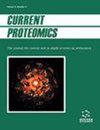StemRegenin-1 通过 AhR/ABC 转运和 AhR/UGTs 途径逆转 MCF-7/ADR 细胞的耐药性
IF 0.5
4区 生物学
Q4 BIOCHEMICAL RESEARCH METHODS
引用次数: 0
摘要
目的:耐药性会降低化疗的抗肿瘤疗效。因此,了解如何逆转耐药性非常重要。本研究探讨了StemRegenin-1(SR-1)在MCF-7/ADR细胞中的抗药性逆转作用及其发挥抗药性作用的机制。研究方法体外细胞检测主要采用 MTT 试验和蛋白印迹法。用 SR-1 和 ADM 处理细胞,检测其蛋白质组学的变化,然后验证 AhR 下游蛋白、葡糖醛酸酶和耐药蛋白的作用。流式细胞术检测了 ADM 在合并细胞中的积累及其对细胞周期的影响。在体内,进行了 BALB/C 小鼠异种移植试验,观察联合用药的抗肿瘤效果和副作用。结果显示SR-1 与 ADM 联用可抑制细胞增殖,并显著降低 CYP1A1、UGT1A6、P-gP (ABCB1) 和 MRP1 (ABCC1) 的表达。此外,SR-1 还能导致细胞凋亡和细胞周期停滞。体内实验表明,SR-1 能显著增强 ADM 的抗肿瘤作用,并降低 ADM 的毒性作用。结论SR-1可抑制AhR活性,降低其下游蛋白CYP1A1以及UGT1A6、P-gP和MRP1在MCF-7/ADR细胞中的表达,并通过AhR/ABC转运和AhR/UGTs途径逆转MCF-7/ADR细胞的耐药性。本文章由计算机程序翻译,如有差异,请以英文原文为准。
StemRegenin-1 Reverses Drug Resistance of MCF-7/ADR Cells via AhR/ABC Transports and AhR/UGTs Pathways
Objectives: Drug resistance reduces the antitumor efficacy of chemotherapy. Therefore, it is important to know how to reverse drug resistance. In this work, we investigated drug resistance reversal by StemRegenin-1(SR-1) in MCF-7/ADR cells and the mechanism by which it exerts its drug resistance effect. Methods: MTT test and protein blot were employed as the two main in vitro cell tests. The cells were treated with SR-1 and ADM to detect the changes in their proteomics, and then the effects of AhR downstream proteins, glucuronidase, and drug-resistant proteins were verified. The accumulation of ADM in the combined cells and its effect on the cell cycle were detected by flow cytometry. In vivo, a BALB/C mice xenograft test was conducted to observe the anti-tumor effect and side effects of the drug combination. Results: SR-1 combined with ADM inhibited cell proliferation and significantly decreased the expression of CYP1A1, UGT1A6, P-gP (ABCB1), and MRP1 (ABCC1). Furthermore, SR-1 caused apoptosis and cell cycle arrest. In vivo experiments showed that SR-1 significantly enhanced the antitumor effects of ADM and reduced the toxic effects of ADM. Conclusion: SR-1 inhibited AhR activity, decreased its downstream protein CYP1A1 and the expression of UGT1A6, P-gP, and MRP1 in MCF-7/ADR cells, and reversed drug resistance in MCF-7/ADR cells through AhR/ABC transports and AhR/UGTs pathways.
求助全文
通过发布文献求助,成功后即可免费获取论文全文。
去求助
来源期刊

Current Proteomics
BIOCHEMICAL RESEARCH METHODS-BIOCHEMISTRY & MOLECULAR BIOLOGY
CiteScore
1.60
自引率
0.00%
发文量
25
审稿时长
>0 weeks
期刊介绍:
Research in the emerging field of proteomics is growing at an extremely rapid rate. The principal aim of Current Proteomics is to publish well-timed in-depth/mini review articles in this fast-expanding area on topics relevant and significant to the development of proteomics. Current Proteomics is an essential journal for everyone involved in proteomics and related fields in both academia and industry.
Current Proteomics publishes in-depth/mini review articles in all aspects of the fast-expanding field of proteomics. All areas of proteomics are covered together with the methodology, software, databases, technological advances and applications of proteomics, including functional proteomics. Diverse technologies covered include but are not limited to:
Protein separation and characterization techniques
2-D gel electrophoresis and image analysis
Techniques for protein expression profiling including mass spectrometry-based methods and algorithms for correlative database searching
Determination of co-translational and post- translational modification of proteins
Protein/peptide microarrays
Biomolecular interaction analysis
Analysis of protein complexes
Yeast two-hybrid projects
Protein-protein interaction (protein interactome) pathways and cell signaling networks
Systems biology
Proteome informatics (bioinformatics)
Knowledge integration and management tools
High-throughput protein structural studies (using mass spectrometry, nuclear magnetic resonance and X-ray crystallography)
High-throughput computational methods for protein 3-D structure as well as function determination
Robotics, nanotechnology, and microfluidics.
 求助内容:
求助内容: 应助结果提醒方式:
应助结果提醒方式:


